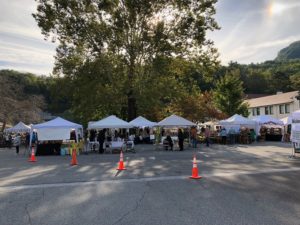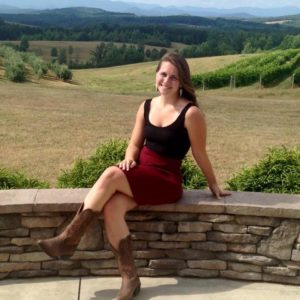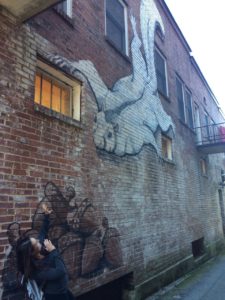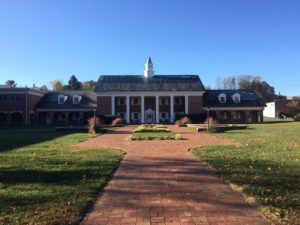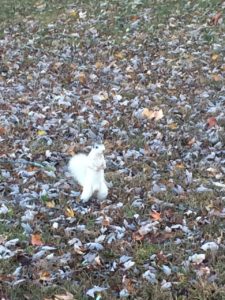By Jenny Kane
In 2012, Cheryl Strayed, formerly Cheryl Nyland, published a memoir of her personal account hiking the 1,100-mile-long Pacific Crest Trail (PCT) when she was a lost and broken 26-year-old in the summer of 1995. The title of the book, Wild: From Lost to Found on the Pacific Crest Trail, in itself represents the purpose and direction of the book as an archetypical, travel inspired memoir. Since its publication in 2012, Wild has become a New York Times bestseller and can be found in most book stores today. The hardcover edition is 336 pages—seemingly lengthy, but overall reviewers agree that it’s a fast read. It was published by Knopf Doubleday Publishing Group, a small, American firm that has been around for over one hundred years. Although it retails for $11.29 from stores like Books a Million and Barnes and Noble, I was able to access it used for $3.99 off of Amazon. The accessibility of the book expands even further with its movie debut in 2014 starring Reese Witherspoon as Cheryl and Laura Dern as her mother. Reese Witherspoon produced the film as a spark to her movement that focuses on reshaping the image of women in the United States. Regardless of its multimodality, in both the memoir and the movie Wild captures the fear and vigor of one young woman pushing against all odds on a journey that hurt, strengthened, and ultimately healed her. That personal journey with self is what makes this book the perfect travel writing example. Her key point is that life doesn’t wait for anyone, and the book’s main purpose is to motivate all of her readers to keep moving no matter how unfair life may seem. Without the will to continue moving, travel is lost, and so is hope.
In several interviews with the New York Times and The Guardian, Strayed comments that the seventeen-year interim between those events in her life and publishing this book was crucial to the rhetorical effectivity of her writing and “ability to grow and reflect”. The aging of her field notebooks and journals are what strengthened the life story she had to reconstruct through writing this memoir. Inherent to the writing process for this particular piece of travel writing was rhetorical reflection on some of the most painful and powerful points of her experience and picking apart her psyche to portray the events as they actually happened. Through this style of anecdotal storytelling, Strayed successfully lends the audience the ethos, pathos, and logos necessary to emote the blunt truth of her situation. Before she hiked the PCT, Cheryl was working as a waitress, separated from her husband, and helplessly mourning over the premature loss of her mother to lung cancer. It was only when she hit her absolute low—her addiction to heroin—that she knew she had to make a radical change. The fake surname that Cheryl developed, “Strayed,” speaks a lot to her identity and life experience as a woman who overcame injustice and failure through physical and mental isolation as a function of travel. Today, Cheryl is an American essayist, podcaster, traveler, and soul-searcher. She has now written four best-selling books and has published many of her essays in popular magazines such as the New York Times, The Boston Globe, and The Washington Post. Wild is her most profound book to date, as it represents her own account of her life as it really happened, not withholding any of the detail.
Strayed says the goal of her journey was to find “radical aloneness,” a mental and physical state in which no other program, job, therapy, or place could give her. In Wild she states “alone had always felt like an actual place to me, as if it weren’t a state of being, but rather a room where I could retreat to be who I really was” (Strayed, Chapter 8). This example is enough to show how impressive of an author Strayed is. It’s personally inspiring to me that a woman with little to no writing experience could produce such profound and poetic diction that has now reached millions of readers. Another personally impactful line from the book was: “I knew that if I allowed fear to overtake me, my journey was doomed. Fear, to a great extent, is born of a story we tell ourselves, and so I chose to tell myself a different story from the one women are told. I decided I was safe. I was strong. I was brave. Nothing could vanquish me” (Strayed, Chapter 4). In my own experience with travel, I find it hard to be vulnerable with the culture and with aspects of my identity that I usually hide away. After reading Wild, I am newly inspired to let the geography and culture shape me more and bring out those vulnerabilities. Strayed is pleading with the reader that overcoming a fear is the first step to growing as a traveler and individual.
Her book starts similarly to how her journey started, with a series of beginnings. One was her decision to hike the PCT after finding a book about it “with a blissful waterfall on the front,” a second was to actually follow through with that decision and purchase all of the gear she would need and conduct research, and a third was to actually put herself at the foot of the trail in the middle of the Mojave Desert. However, it wasn’t until after her hike that she realized that her true beginning was the day she discovered that her mom had cancer. After laying out these pieces of her journey, Strayed uses the remainder of the book to take the reader through a loop of rhetorical analysis and reflection of the past events of her life as they relate to her journey on the trail. No one could prepare her for the news of her mother’s passing when she had already battled so many personal feats throughout her short life thus far. But it was this news that first sent her down a meek road, full of disappointment. Hiking the PCT for Cheryl meant escaping the source of heartache that she was familiar with and being forced to confront it in an unfamiliar landscape. Thus, Wild is an example of travel being used as an outlet to explore identity and individuality, and that is what Cheryl was able to harness through her own journey.
After doing some research of my own on the Pacific Crest Trail, it becomes clear pretty quickly that it is no place for a novice hiker. Cheryl was exactly that at the beginning of the summer of 1995. She had no idea how she would complete the journey from the Mojave Desert to the forests of Washington State, as the trail is loaded with untouched and awe-inspiring biodiversity that most people never get the chance to experience. The people on the trail are usually either experts on the geography, skilled hikers and outdoorsmen, or hunters, all of which Cheryl was not. However, when she did interact with any of these groups, she at first approached them with her appropriated reaction of fear and distrust. By the end of the trail, and book, she meets a group of hikers and spends the night with them. It is then, at the end of her journey, that she is able to let down her walls and allows herself to be vulnerable, something she hadn’t done in a long time. Both the close-knit culture and the dangers of the trail forced Cheryl to challenge her previously formed identity, and to look at life through an open lens.
Very little of the book is actually devoted to Strayed’s childhood and the actual event of her mother’s death. Strayed uses a theme that reminisces the life that aligns with various events and hardships she faces on the trail. The emotional scenes she does give about her past are incisive and full of pathos: “crying in a public bathroom after her mother receives a diagnosis of incurable cancer, her mother crying in the next stall over, neither saying a word to the other”. This is the only paragraph she gives but it is enough to bring the reader to that moment and empathize. Most of the book is subtler and focused on the details of life hiking the Pacific Crest Trail. She states “the wanting was a wilderness and I had to find my own way out of the woods,” before diving into tales of enormous backpacks, friendly fellow hikers and treacherously icy mountain paths (Strayed, Chapter 2). The audience also begins to realize here the deeper meaning of this “wilderness” as a more complex, psychological metaphor. Although nothing was particularly extraordinary about her hike along the PCT, her travel writing is relatable and motivational to all readers who may be going through similar events in their lives. Cheryl Strayed purposes this book as a means for readers, especially women, to empower themselves as individuals through travel, and synonymously through soul-searching.
This memoir has had a personal impact on me as a novice to both life’s hardships and travel. It has inspired me to address both the mental and physical obstacles in my life and to not let those obstacles define who I am. Furthermore, my values and upbringing have helped give me a perspective of my own and, thus, the impact this memoir has had on me is individualized, as is every other reader’s. I first had watched the movie and was extremely inspired by the message and emotion within the film. While reading, I had the tendency to picture some of the scenes from the movie, but I do not see this as an impairment to the significance of the book itself. Instead, the movie acts as a guide for my mind to explore the author’s journey. I feel a personal connection to the author and her message in that I understand how embracing and isolating oneself in nature can act as a therapy for some of life’s hardest moments. As a fellow woman, Cheryl Strayed represents an amazing role model for me and other women as she motivates her readers to empower themselves through travel in nature—bringing herself down to the bare bones of her identity.
The primary research I conducted before reading this book involved understanding the Pacific Crest Trail, its landscape, its dangers, and its culture. Similarly, to follow up on some of the fine details Cheryl Strayed describes in her memoir, I made sure to look into each stop along her journey to help bring a real image to the words on the page. The PCT is more than just the geography. There is an entire association that surrounds itself on the ideology of ecological preservation and community—something that Cheryl found inspiring and uplifting when before she had never even thought to be a part of such a culture. Next, I researched Cheryl, her interviews, and as many reviews as I could possibly find on her book and the movie. I found that her personal interviews and book reviews were pretty spot on with the film, which was surprising and impressive. Overall, I discovered an author who has successfully written a multifaceted book that takes travel writing and places it at the heart of the human psyche and life as a human being. Each reader gets their own experience in reading the book and watching the movie and is effected in a different way. Cheryl herself is trying to show her readers and the public that life is hard, but it is the only life we are given so it is important to embrace it and enjoy it; and more importantly, that some types of extreme travel can cure even the most painful aspects of life.
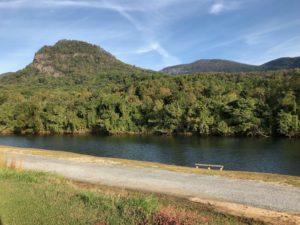 Along the winding road of Highway 64 lies Lake Lure. This small town is known for its parks, historic landmarks, and, as denoted by its name, winding lake. Lake Lure is not vast in size, with a population just shy of 2,000 people, but it’s landmarks cannot be missed during a journey down Highway 64. When traveling from the west, you will first stumble upon the grand entrance to Chimney Rock State Park. A quick turn in will lead you through a tree lined climb up to the state park entrance. The road, which is surprisingly wide enough to fit two-way traffic, is a difficult drive. However, the clearing at the top that houses the Chimney Rock entrance is a welcome surprise. The entrance is home to a guardhouse that must be passed through before being admitted into the park. While waiting in line to speak with the park guard, the view is incredible. You can see Chimney Rock and the hike up along with a beautiful blue sky and autumn leaves if you, like us, visit on a clear October morning. Be advised, however, that admission into the park is not without cost. At a rate of $13 per adult and $6 per child, tickets to this unique experience can be purchased both online and at the park entrance gate. This seemingly steep admission cost caught us by surprise. As a result, we turned around and braved the treacherous drive once over to see what else Lake Lure had to offer.
Along the winding road of Highway 64 lies Lake Lure. This small town is known for its parks, historic landmarks, and, as denoted by its name, winding lake. Lake Lure is not vast in size, with a population just shy of 2,000 people, but it’s landmarks cannot be missed during a journey down Highway 64. When traveling from the west, you will first stumble upon the grand entrance to Chimney Rock State Park. A quick turn in will lead you through a tree lined climb up to the state park entrance. The road, which is surprisingly wide enough to fit two-way traffic, is a difficult drive. However, the clearing at the top that houses the Chimney Rock entrance is a welcome surprise. The entrance is home to a guardhouse that must be passed through before being admitted into the park. While waiting in line to speak with the park guard, the view is incredible. You can see Chimney Rock and the hike up along with a beautiful blue sky and autumn leaves if you, like us, visit on a clear October morning. Be advised, however, that admission into the park is not without cost. At a rate of $13 per adult and $6 per child, tickets to this unique experience can be purchased both online and at the park entrance gate. This seemingly steep admission cost caught us by surprise. As a result, we turned around and braved the treacherous drive once over to see what else Lake Lure had to offer.